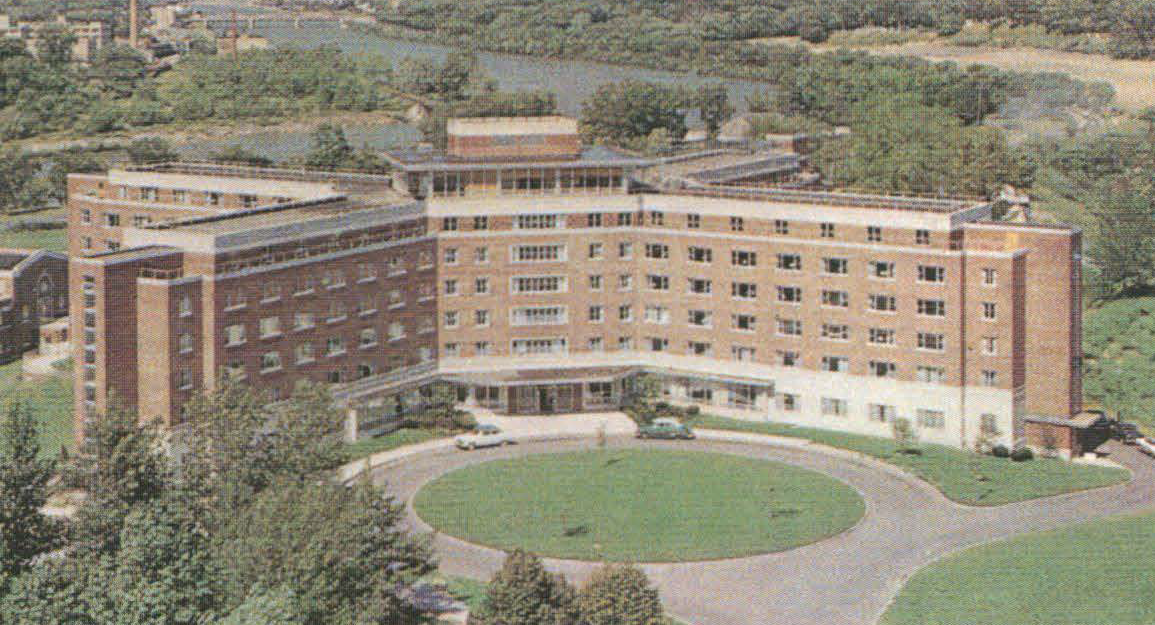
| River Campus | Susan B. Anthony
Halls |
 |
| Women's Residence Hall around 1956 |
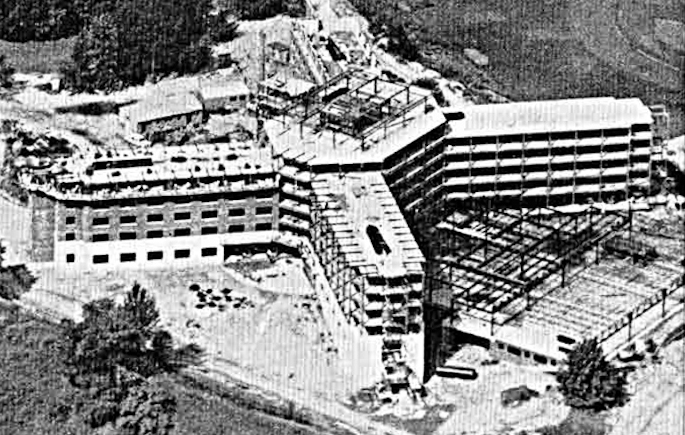 |
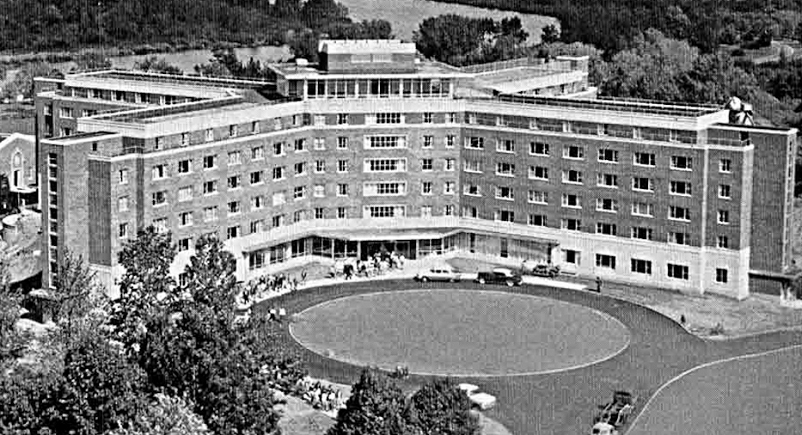 |
| Under
construction in September 1954. |
Women's Residence Hall in 1955. |
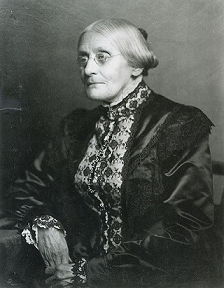 |
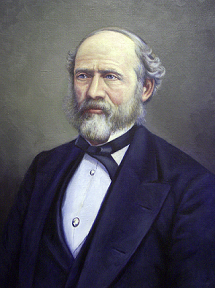 |
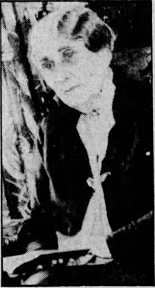 |
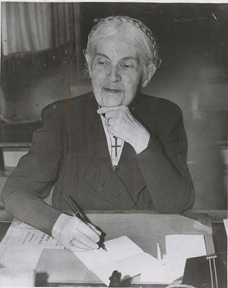 |
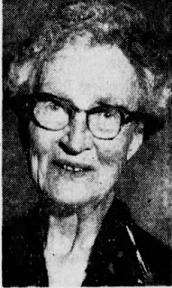 |
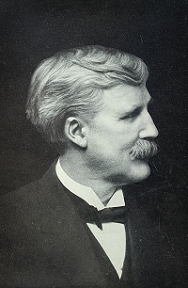 |
| Susan B. Anthony | Lewis Henry Morgan | Emily Weed Hollister | Mary Thorn Lewis Gannett | Edwina Danforth | Frederick Taylor Gates |
The 1952 decision to reunify the campuses required construction of new buildings to accommodate the arrival of women in 1955. A new Women's Residence Hall opened in October 1955 and consisted of four wings named for Lewis Henry Morgan, Susan B. Anthony, Emily Weed Hollister, and Mary Thorn Lewis Gannett. A dining center was named after Edwina Danforth, The building housed 636 women and included the college infirmary. College administrative offices were housed temporarily on the second floor while the new Administration Building was being constructed.
The building was nicknamed Habein Hilton after Dr. Margaret Habein, Dean of Instruction and Student Services. The head resident of the Anthony wing was Vera C. Bushfield, who had served briefly as U.S. Senator from South Dakota after her husband's death.
The entire building was renamed for Susan B. Anthony in 1974 and the former Anthony wing was renamed for Frederick Taylor Gates.
References
1881 Lewis
Henry Morgan (1818-1881) Grave in Mt. Hope Cemetery
1906 Susan B. Anthony (1820-1906) Grave in Mt. Hope Cemetery
1853 Frederick Taylor “Fred” Gates (1853-1929) Grave in Mount Hebron Cemetery, Montclair, New Jersey
1932 Emily Weed Barnes Hollister (1856-1932) Grave in Mt. Hope Cemetery
1932 "Funeral
Rites Tomorrow for Social Leader," Democrat and Chronicle,
August 10, 1932, Page 15.
Mrs. E. W. Hollister Will be Buried in Mount Hope.
1952 "Women To Enter New River Dorm in Fall of '54," Tower Times, September 15, 1952, Page 1
1952 "Mrs. Gannett Mourned As Useful, Loved Citizen," Democrat and Chronicle, October 27, 1952, Page 1. | Part 2 |
1953 "Plans
Reveal Women's Center Behind Library," The Campus, March 13,
1953, Page 1. | Part
2 |
In the old days when the present River Campus was the home of the Oak Hill
Country Club, the hill on which the Women's Center will be constructed was
a favorite hill for skiing and tobogganing, and was known as "Gibraltar."
1953 "Ground-Breaking Event Indicates Tangible Progress Toward Merger," Tower Times, September 14, 1953, Page 4.
1954 "Women's Center Progresses Well as Workmen Put Up Superstructure," Tower Times, February 26, 1954, Page 6
1955 "New Dormitory Awaits UR Coeds," Democrat and Chronicle, September 20, 1955, Page E1.
1955 "A Hill Steeped in History, Lore," by Arch Merrill, Democrat and Chronicle, October 30, 1955, Page 14E
1955 "New Women's Residence Halls Enhance Campus Life, Win Wide Admiration," Rochester Review 17(2):6-9 (November 1955)
1961 Edwine Blake Evans Danforth (1863-1961) Grave in Mt. Hope Cemetery
1961 "Mrs. Danforth Passes at 97," Democrat and Chronicle, May 21, 1961, Page B1.
1964 "Fire and Panty Raid' Form Sunday Night Double-Feature," Campus Times, April 7, 1964, Page 1. | Part 2 |
1974 Democrat
and Chronicle, July 27, 1974, Page 10
The women's residence halls at the University of Rochester River Campus
were renamed the Susan Brownell Anthony Halls yesterday by the
University's board of trustees. Miss Anthony, 19th century crusader
for women's rights and a Rochester native, was instrumental in raising
funds for women to attend the school. The building was erected in
1955.
1977 History
of the University of Rochester, 1850-1962, by Arthur J.
May. Expanded edition with notes
Chapter 35, Reunion of the Colleges
Even before the trustees had formally sanctioned consolidation,
preliminary planning for new physical facilities on the River Campus had
taken place. A women's residence center and gymnasium would be erected,
and, after careful weighing of alternatives, it was agreed to reserve a
section of the center as an infirmary.
Using red brick with limestone trim, the exterior appearance of the new
buildings would match the older River Campus structures, but columns and
cornices would be excluded because of the prohibitive cost. The firms of
Eggers and Higgins of New York City and Waasdorp and Northrup of Rochester
combined forces in drafting the designs, and A. W. Hopeman and Sons
Company was picked as the general contractor.
For the women's residence hall a steep knoll, known in Oak Hill Country
Club parlance as "Old Gibraltar," the sixteenth hole on the golf links,
was chosen; it afforded pleasing panoramas of the Genesee River and the
city. A tunnel would connect the structure with a gymnasium, fitted into
the hillside to the north.
As finally designed, the women's residence center rose to six stories, the
facade facing Rhees Library; four self-contained sections radiated in an
impressive arc. On the first floor a foyer, flanked by offices, led into a
corridor with spacious lounges on either side. At the north end, a dining
room of four separate units had sliding screens which could be pushed back
to form a large hall of 700 seating capacity. Five levels of living
quarters accommodated about 630 students with double rooms four times as
numerous as singles; each floor had two lounges and two kitchenettes. The
top floor contained a glass-enclosed solarium and a deck for sun-bathing,
while in the basement areas were reserved for games, typing, a snack bar,
and a laundry. Small wonder that, undergraduates tagged the splendid
edifice "The Habein-Hilton."
On Wednesday, September 2, 1953, ground-breaking ceremonies for the
women's center were conducted on "Gibraltar," Dean Habein gingerly lifting
the first shovelful of earth. Brief talks hailed the event as an important
move in the direction of equality of collegiate opportunities for women,
or, as de Kiewiet put it, of ending "something very much like
discrimination," and Trustee Chairman Ball echoed that sentiment. Earlier
it had been forecast that unification would be brought about in the autumn
of 1954, but now it was revealed that it would come a year later; de
Kiewiet chafed under delays caused by successive revisions in building
designs and by strikes of workmen.
Some artisans who had been employed in the construction of the original
River Campus buildings also worked on the new structures, but trucks had
now wholly displaced horse-drawn carts and costs per cubic foot of floor
space had climbed about three times.
While construction progressed, a committee on sites and traditions,
chaired by Professor Carl K. Hersey, was instructed to prepare an
inventory of names, memorials, traditions, and the like at Prince Street
worthy of transfer to the River Campus, to recommend new sites for the
memorials and wording for commemorative plaques. For one reason and
another the historic names of Anderson, Sibley, Reynolds, Carnegie, and
Catharine Strong, affixed to Prince Street structures, were passed over.
Though the women's residence center retained that nondescript, inelegant
title, its four wings honored individuals who had pioneered in the
education of women at the U. of R.: Lewis Henry Morgan, Susan B. Anthony,
Emily Weed Hollister, and Mary T. L. Gannett. To the dining hall at the
women's center was given the name of Edwine Danforth, another tireless
promoter of higher education for women, who had served, for example, as
the treasurer of the Anthony Memorial Fund of 1907 and for many years was
a trusted friend and advisor of the College for Women.
Delayed by work stoppages, the women's residence hall was ready when class
instruction commenced on October 3,1955. (Lack of housing had forced a
two-week postponement in the opening of the school year.) Several months
elapsed before the women's gymnasium and the men's dining center were
fully finished. Approximately three-quarters of the women students--about
540 or nearly one hundred more than had been estimated a year before--took
up residence in the dormitory. Rooms were tastefully furnished in blond
maple furniture with bedspreads and curtains for the large windows in
striking color harmonies; a lounge and eight bedrooms were set aside for
use by commuting undergraduates. Management of the residence hall was
entrusted to a director and four head residents, with five graduate
students as assistants.
© 2021 Morris A. Pierce